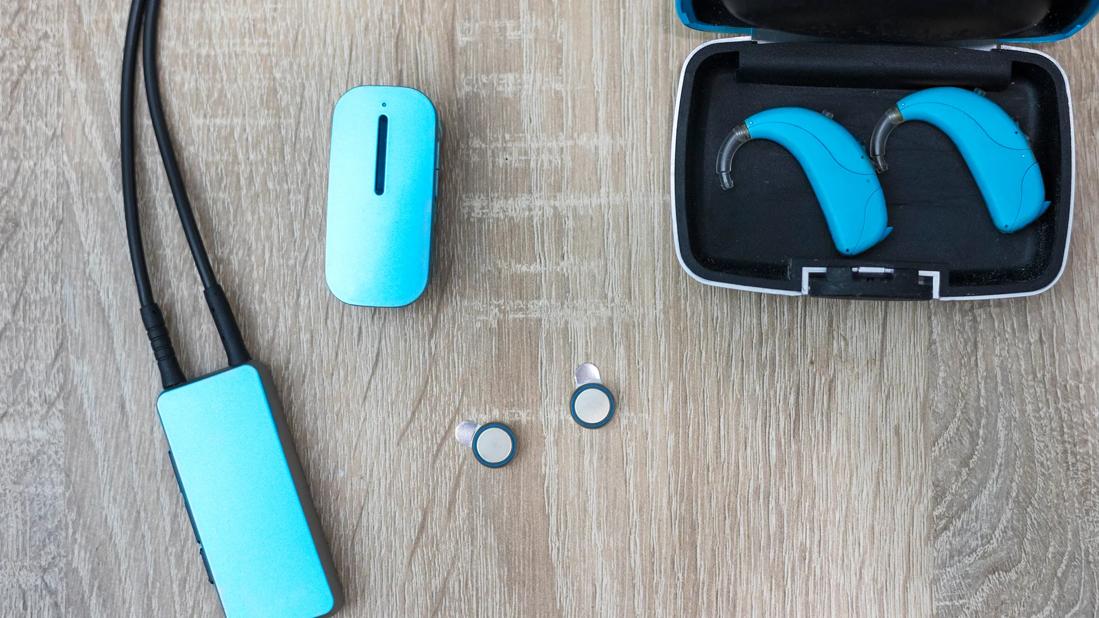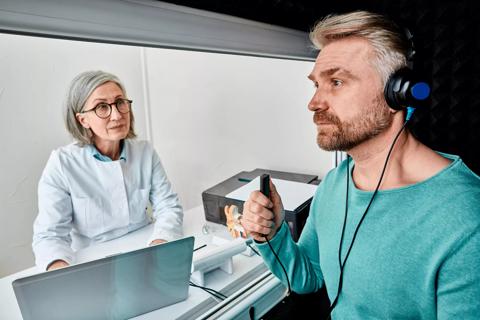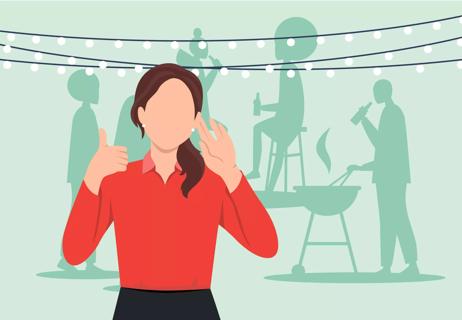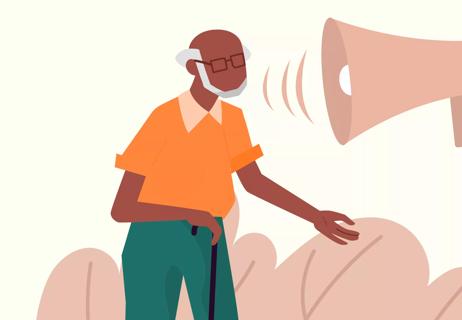Hearing aids can be enough for some people, but other devices — like for your phone, TV and fire alarm — can help, too

If you’re living with hearing loss, one of your first steps was probably going to an audiologist to get your hearing tested. And then, having a conversation about hearing devices, like hearing aids.
Advertisement
Cleveland Clinic is a non-profit academic medical center. Advertising on our site helps support our mission. We do not endorse non-Cleveland Clinic products or services. Policy
And for some people, they do the trick.
But other people are better served with certain hearing assistive technologies. Or from a combination of hearing aids and assistive technologies.
“Hearing aids may not be the only answer for all of your hearing needs,” says audiologist Julie Honaker, PhD. “Some people don’t wear them all the time or could benefit from some additional features to extend their functionality.”
What are some of the hearing assistive technologies available to you? Dr. Honaker shares some of the options.
Hearing assistive technologies (HATS) are devices that can help people living with hearing loss.
Some of these technologies can help improve hearing in certain situations that hearing aids may not be best suited for. Like talking on the phone, watching TV or listening to a speaker in a crowded auditorium.
Others can help improve your ability to alert you in specific situations. Like when someone is at the door. Or if the fire alarm is sounding.
“HATS can help people with hearing loss stay safe and aware of their surroundings,” Dr. Honaker affirms. “And they can help keep you engaged in conversation and social interactions, which is important for your mental health and overall well-being.”
Advertisement
The best technologies for you to assist your hearing will depend on your level of hearing loss, your goals and your lifestyle.
But these common devices may be among technologies to consider.
Remote microphones may help when things like background noise and overlapping chatter make it hard for you to engage in conversations.
These small, discrete microphones pick up a speaker’s voice and send it either directly to your hearing aids or to an intermediary device. That allows the talker’s voice to be heard as if they were standing directly across from you — even up to 30 feet away.
Remote microphones can be good options if you have trouble hearing in settings like:
“When speakers wear these devices, it can help amplify their voice directly to you and block out background noise so you can follow what’s being said and readily engage in conversation,” Dr. Honaker explains.
If you’re turning up the TV to full volume or relying on captions, even with your hearing aids in, there are assistive technologies to help.
TV streaming devices are wireless units that send audio signals from your television either directly to your hearing aids or to an intermediary device. That allows you to adjust the sound of the TV to the volume that works best for you — without others complaining that it’s too loud.
Many hearing aids can connect directly to your smartphone or through another accessory. That means you can use them like headphones while talking on the phone or watching videos.
These also offer an advantage over holding your phone up to your ear because you use both ears.
“These can help people keep their cell phone use private, rather than having their phone volume up high or using speakerphone features to help amplify the sound,” Dr. Honaker points out.
Your sense of hearing isn’t just for communicating with others. It also helps to keep you in touch with your environment.
Things like remote microphones, TV units and cell phone connections can help you follow conversations. Other hearing assistive technologies can alert you to other sounds around you.
“Alerting technologies can help people experiencing hearing loss to stay safe and independent,” Dr. Honaker notes.
Among these are technologies such as:
Advertisement
If you think you may benefit from certain HATS, Dr. Honaker advises talking with an audiologist for recommendations.
These products can often be bought online or obtained through your healthcare provider’s office. And you may be able to purchase them using a health spending account (HSA) or flexible spending account (FSA).
But the options may be overwhelming. And some products may work better for you than others.
Working with your audiologist, you can be more confident in making the right choice for your needs.
Advertisement
Learn more about our editorial process.
Advertisement

Sudden hearing loss can have many causes — but it’s important to seek treatment fast

Untreated hearing loss can affect kids’ speech and language development and their overall quality of life

Avoid poorly fitting gear, opt for quality devices and consider sound-limiting technology to help prevent noise-induced hearing loss

Reduce background noise, don’t talk too fast or too slow and above all, ask what’s most helpful to them

COVID-19 may be associated with tinnitus, but research is still ongoing

There are lots of tips, tricks and assistive devices out there that can help

Ringing is already a sign of damage, but you can take steps to keep your hearing protected

Keeping your brain healthy is key

Babies can get congested easily, but you can calm their cough by keeping them hydrated, using nasal drops and running a humidifier

Weight loss may cause loose, sagging skin and muscle loss to your rear

Several conditions, like vitiligo and fungal infection, can cause a loss of pigmentation, leading to white spots or patches on your skin